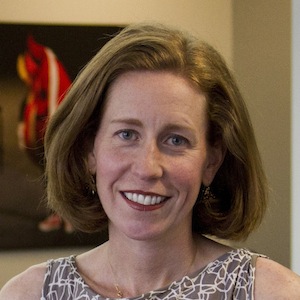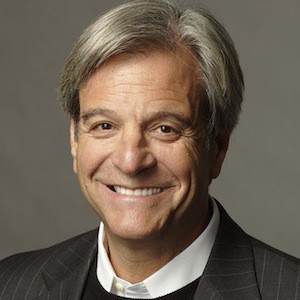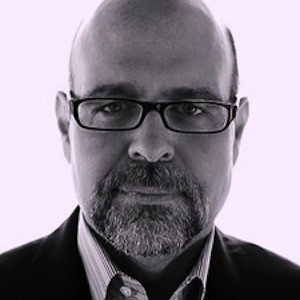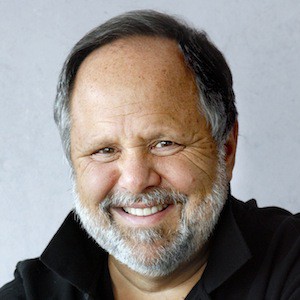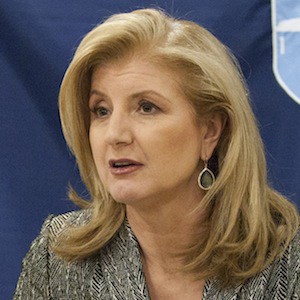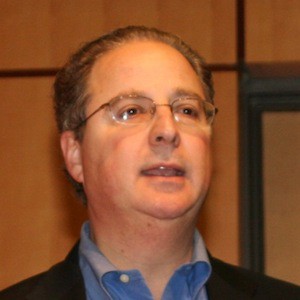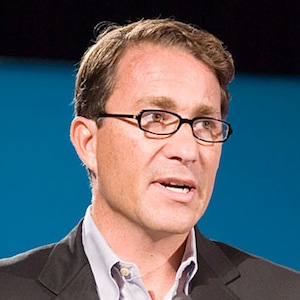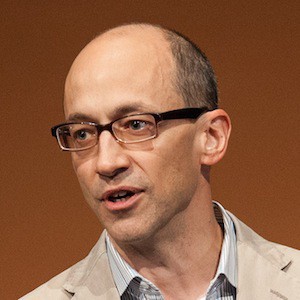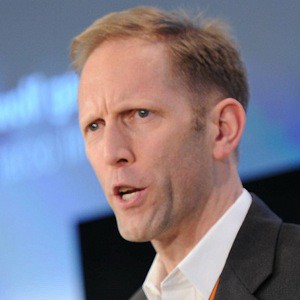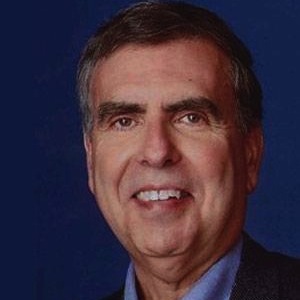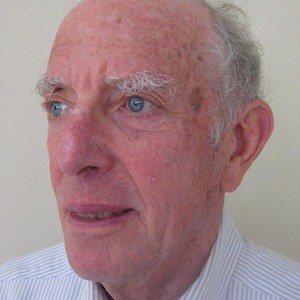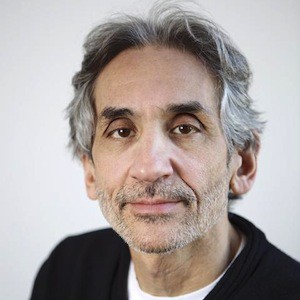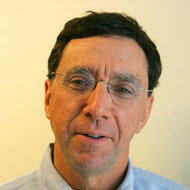John Huey: It is March 13, 2013. We’re in the offices of TheBlaze, speaking with Betsy Morgan. Betsy, you’ve been a mainstream media, digital news person, and you’ve been a disruptor more than once. Could you give us just a brief bio of yourself and where you fit into this picture?
Betsy Morgan: Thank you, John. I’m a little bit of a strange bird. I am not a television producer. I was not a communications major in college. I’m a businessperson who, in many ways, fell into the news business when I joined CBS News back in 1999, after I had been at corporate CBS for a couple years. I have always been the person that has had the good fortune of looking over the horizon, looking over the horizon of television to the world of digital and looking over the world of digital to think about disruption. That both have happened in the course of The Huffington Post and in my current job in TheBlaze.
I’m an unusual person in that I have straddled both worlds I’d say pretty successfully and have been successful in both environments, both of which are very, very different. The things that it takes to get ahead in a traditional, large scale media organization are far different than what it takes to grow an audience, to grow revenue, and, most importantly, to grow a brand in a startup, which is what we did at The Huffington Post and what we’re doing now at TheBlaze.
Along the way, I’ve broken a lot of rules. I’ve challenged the establishment more than once, on more than one occasion, and I’ve had an awful lot of fun.
I do think the world of news is changing rapidly, and I’m glad to see some of my colleagues from traditional media continue to stay in the fight and continue to be very, very successful in allowing their brands to stay relevant and part of the conversation. I’m also very, very excited that newer brands in the space remember, Huffington Post was not even on the scene until 2005, which really wasn’t that long ago.
And, brands like TheBlaze, which is just two years old, are coming in and challenging all sorts of historical beliefs about what it means to be a news and information organization in a digital age.
John: You obviously have a strong point of view, and we’re going to get to a terrific story here in a minute. Before we go there, could you just speak briefly about, really, the core differences between the culture of an established media company, say CBS, and the culture of a disruptive media company, say HuffPo or TheBlaze? What is the essential cultural difference?
Morgan: The essential cultural difference. In traditional media, you get up every day worried about the audience that you’re going to lose and worried about the revenues you’re going to lose when you lose that audience. Every day you’re preserving something not growing anything, you’re preserving something. In a startup brand, with no audience and no revenue and, in many ways, no idea how it’s going to fit into the ecosystem, it’s all about gaining. It’s about gaining audience. It’s about gaining revenue. It’s about building a brand. It’s a much different mindset. The way that established media responds to disruption, threats, innovation, is far different than how a startup, innovative organization responds to all those things.
For me, I’m now one experience in traditional media and two experiences in startup world. I must say I prefer the startup world and the world of growing something out of nothing much better than preserving a legacy. It’s hard out there. It’s hard to preserve a brand. It’s hard to preserve revenue. It’s hard to keep that audience.
I think that’s why it’s hard for mainstream media to be disruptive, because they can’t afford to break what they have, because what they have keeps a lot of people employed.
[recomplied]
John: What we would like to capture here today is some of that feeling, of both sides of that equation.
Betsy: I think I am an interesting person in this ecosystem, and an interesting executive in that I’ve been on both sides of the equation in a really, really new frontier and in challenging times. I think what’s interesting, if you look out over the landscape of news executives, there aren’t a lot of people that have had great success in established media and legacy media and traditional media, and also great success on the startup side.
I think in a lot of ways, the skills, particularly if you’re a business person, the skills don’t necessarily translate. What’s really good, what you’re really good at in being successful in a big corporation is often a different skill set than in a startup space.
For whatever odd reason, I’ve had the opportunity to do both, and I’ve had the opportunity to be successful…
John: You started out as what?
Betsy: I started out at CBS in corporate development. When I went over to the news division of CBS in 1999, I dare say many of my colleagues and peers on Andrew Heyward’s senior staff thought I was some sort of spy from corporate that was going to look at their books and look at what they’re doing and got the place and report back to Black Rock. What happened was not that at all. I was able to work in the news division forming strategy and thinking about how this business that was $500, $600 million in revenue was going to be relevant 10, 20, 30 years down the line.
At the time, we were less worried about the web and more worried about CNN cable television. How would the broadcast news network survive in an era where Fox News was just getting started and was interesting but nothing to be frightened of yet from an audience standpoint or from a revenue standpoint.
Same as true at MSNBC. CNN, on the other hand, was really the 800 pound gorilla in news because it was making money both on the affiliate side, affiliate revenue and advertising revenue. The broadcast news networks were beginning to get a little bit nervous.
Here I was, this business executive, who wasn’t running a show, wasn’t overseeing content day to day in any fashion, but had this strategic perspective and the ability to think and show the other executives over the horizon at what was coming.
What, of course, John, is so fascinating is that the 800 pound gorilla, what was coming over the horizon that was so important wasn’t CNN or the rise of Fox News or MSNBC. Of course, it was the Internet.
John: What was your first scent of the gorilla?
Betsy: Gosh, my first scent of the gorilla was probably right around 9/11. I think in many ways, 9/11, from an editorial standpoint, was a changing agent in terms of how people were getting their news. If we remember, back to 9/11, where people went back to work for the most part the next day or a few days later and tried to resume, across the country and across the world, some degree of normality in their work life, yet very much wanted to continue to be glued to the news and what was happening.
No one really knew exactly what had happened on September 11th, what the fallout would be, would be go to war? Who were these people that flew planes into the Twin Towers?
Most work environments didn’t have televisions, so many people got that information, and really, if you look back at the ratings numbers from AOL, from cnn.com, from msnbc.com at that time….
John: It’s interesting that you cite 9/11, because Martin Nisenholtz, who is a partner in this project but also the developer of New York Times Digital cites 9/11 as the turning point for digital news at the New York Times. It was the first time that suddenly they were in a serious 24/7 environment, where they were reporting real time, and it continued ever since then. CBS was there with no real cable outlet, no real 24/7 television out, so that must have created some kind of realization there.
Betsy: For the first two weeks after 9/11, that was OK. Because if you remember, those first two weeks, certainly the first week after 9/11 all the networks went without commercial, without interruption, seamlessly, they stayed on the air all the time. In a lot of ways, the initial response to 9/11 put us on equal footing with the cable networks. It was after that point when the broadcast networks resumed regularly scheduled programming that CNN certainly, people were turning to the CNNs and the Fox News and the MSNBCs of the world. Again, I really think it was more CNN than the other two to get their news and information.
John: By that time, CNN.com was a well known entity already.
Betsy: Absolutely, an absolute powerhouse. As was MSNBC.com, because it had the power of Microsoft to drive traffic.
John: When did CBSnews.com, which you started, right? When and how did that happen?
Betsy: CBSnews.com was started in, if I remember correctly, ’97, ’98. There were a number of people in the news division. Steve Jacobs is one of them, a long time CBS News executive that was instrumental in the early days of CBSnew.com. Dean Daniels, another executive and ex local news director was also instrumental in the beginnings of CBSnews.com.
John: What year was that?
Betsy: That was ’97, ’98. I joined CBS in ’97, so it was just about when I was coming into CBS that they were starting their efforts on the web and on the entertainment side as well, for CBS.com on the entertainment side. CBS had taken an interest in Sportsline, which then became CBS Sportsline, which then became CBS Sports. We had taken interest in 1997 another site called MarketWatch, CBS MarketWatch, which was eventually sold.
John: I’m going to ask you about that.
Betsy: Which was eventually sold to Dow Jones, and part of the Dow Jones empire.
John: We interviewed Larry…
Betsy: Larry Kramer?
John: …just this week, so all your buddies are in here.
Betsy: Which was very fun. Larry Kramer, I’ve had many lives with Larry Kramer. The first CBS MarketWatch, and it was called DBC at the time…Called DBC for Data Broadcasting Corporation. The first CBS Data Broadcasting Corporation meeting took place, I think, two weeks after I joined CBS. I flew out to San Francisco with some other executives, including Derrick Ricefield, who did the original deal with Larry to make the original investment in CBS MarketWatch. I’ve known Larry since 1997. He came and has been a friend all along.
He came back into my life in a day to day way in 2005, I believe, 2004, 2005 when he came in to run CBS Digital. That was after MarketWatch was sold to Dow Jones.
John: To back up, when you started CBSnews.com at the time, was this part of a strategy that you were working on to make CBS News more competitive in the future some way or another? Or was it an advertising strategy?
Betsy: I think at the time it was a novelty. I think at the time it was…
John: Everybody had one, so you had to have one?
Betsy: Everybody had one, so we had to have one. I don’t think we had thought at that time that it would be a big advertising platform. I don’t think anyone had any idea that the web would be where it went to….
[pause]
Betsy: CBSnews.com, at least when I started, everyone believed that the web was something…I don’t think we had much expertise in house on how to build, what to build. It’s one of the reasons that we had made those early investments in Sportsline and MarketWatch, so we could watch some standalone companies build and see what they were doing. CBS then went on and made a number of other investments. They were an exchange of equity for marketing and promotion of those brands, made a whole bunch of those investments in the late ’90s.
Again, from a perspective of not really wanting to put so much cash towards this business, but being interested in learning and being interested in growing these companies and feeling like…Again, this is during the first dot com boom, pre the first bust. Thinking like, “This is of value, but we don’t really know where these businesses are going.”
John: 9/11 was when you saw the possibilities? Did you see the possibilities more from a positive point of view? What CBS News could do with it, or more from a threatened point of view?
Betsy: I think both. I certainly as a young person at CBS News felt it was a door opening to a world of possibilities. On the television side, I think the web was still very much thought of as a threat and a competitor to traditional television and traditional television news. I think we were…
John: You had that whole innovator’s dilemma which everyone talks about?
Betsy: We had the innovator’s dilemma combined with the fact that CBS News was not a 24/7 news outlet, nor was NBC News, nor was ABC News. The content team was used to working towards certain day points, a morning television program, an evening television program. The folks working on “60 Minutes” worked on a totally different schedule. We were prepared for breaking news at any time. We were prepared globally for breaking news, but we weren’t broadcasting breaking news, so the web posed an enormous threat because it was clear that this was a medium that was not a nine to five medium.
John: You were looking suddenly at Yahoo! And AOL and outlets like that, and cnn.com and going…
Betsy: Absolutely.
John: People want this post 9/11 news all the time, and there it is and we’re not there. That leaves me to the question that I’m really curious about, and we’ve asked several people this question. Television networks still have the largest audience for pure news in their big shows. They still aggregate tens of millions of people to watch these shows.
They’re very trusted, very well branded news outlets. Why have they been unable to make much of a mark online?
Betsy: I think that one, audience that is still watching 6:30 news, evening news broadcasts. It is almost universally a very old audience. It’s not a younger audience. I think really a lot, for the broadcast news networks, a lot has factored into no matter who you talk to and what they say a news organization that has its roots not being a 24/7 outlet. One reason.
The other reason is television news, I believe, didn’t start out this way, but really grew interesting a medium that did not write particularly well. The value of the printed word and the appreciation of the editorship needed for the printed word. That set of skills didn’t really exist in television news the way it did in newspapers and magazines.
[pause]
John: So after 9/11, what happens at CBSNews.com?
Betsy: I think there was absolutely a realization that the world was looking different, and that the Web was important. Certainly we saw the numbers. The numbers at CBSNews.com spiked tremendously after 9/11, as they did for every other news website. We really started going down that path of trying to understand what the Web was and how we could take our television assets and put them online. Again, still very, very early days in the video space…
John: Because broadband was just…
Betsy: Broadband was just getting started, and the legal ramifications of putting clips that had AP content in it, that had Reuters content in it, putting it online, we didn’t have clearance for all these new mediums. So that became more difficult, because here our bread and butter, the television side, the video side, of news was not showcased in a super meaningful way online, the way it is now. And a lot since then. Now a lot of those hurdles, a decade later, have very much been overcome and dealt with.
John: But yet, network television news, and we’ll leave this subject in a minute to get to what we’re really very interested in, which is the big disruptorship, when you go from being a traditional media company to a disruptor. I want to get you to say this again, just in case I missed some of it before. Yet, network television news still hasn’t become a major player in the online news business, and you were saying earlier, that was because…
Betsy: I think that was because a number of reasons. One, broadcast network news never really understood the 24×7 news cycle. They weren’t set up, they didn’t have a history that was geared towards being on air, except in very specialized, breaking news moments, 9/11 being one of them. That was a great effort for CBS and ABC and NBC to stay on air continuously as long as they did.
We could do it on election nights, on presidential election nights, but it wasn’t commonplace to us the way it was of the cable networks.
There was a combination of that, and there was also the issue of really writing. That people in television at that point, that had been communications majors in college that had gone into television in the ’80s and early ’90s didn’t have the same skill set that print journalists did.
The web was still very much then, I really think, and even today, still very much a print text medium, which is why the newspapers and the magazines had such a competitive advantage over the broadcast news networks and still do.
John: Now, you were a strategist and you were a business person, and this is the last CBS question. Did you ever consider that CBSNews.com might be something that would be charged for?
Betsy: No.
John: Even after you bought MarketWatch?
Betsy: We never really looked at it as a pay business, and I think that was a combination of not having this sophistication to be in the commerce business. Now remember, CBS as a television network never had meaningful revenue other than advertising revenue.
John: Right, so one stream business.
Betsy: It was a one stream business, so it wasn’t the core competency in the company to really explore what it would be like to have a commerce business, a subscription business. Had we had magazine people or newspaper people in at the highest levels of the network, I think that would’ve been a different story.
John: You embarked on a series of investments that included…I guess the most notable one was Market Watch, the biggest one. What was the thinking there?
Betsy: The thinking there was very smart thinking on CBS’s part, the part of CBS corporate led at the time by Mike Jordan and Fred Reynolds was, we would invest in these companies. We would take, in exchange for equity in these companies, and a seat at the table to understand how they were growing, we would give them marketing and promotion on the network, which was very, very valuable. Market Watch actually changed its name to be CBS Market Watch because of the brand that it was associated with. To be associated with the brand of CBS and what that meant in the news and information business was valuable enough to Market Watch, this teeny little brand that no one had ever heard of. That was part of the exchange. If you remember, CBS Market Watch had a green CBS eye on it for many, many years. That was a branding strategy of [indecipherable] , I think, turned out to be very smart.
John: Were you there when it was sold to Dow Jones?
Betsy: I was still there when it was sold to Dow Jones, absolutely. Andrew Hayward, my boss at CBS News, was on the Board at Market Watch and was obviously part of the discussions. In the sales, CBS bid for CBS Market Watch, as did Pearson, the other outside company that was invested in Market Watch at the time, we both lost out, as did I believe the “New York Times,” but I think it was early on in the bidding, all three of us lost out to Dow Jones. Leslie Moonves said very famously when he hired Larry Kramer, months after the Market Watch deal closed “While I might not have gotten the company, I got the guy. I got the guy that built the company, and that’s far more valuable.” That’s when, I believe it was 2005, when Larry Kramer came in to work for CBS.
John: Then later of course, CBS bought CNet but you were long gone by that time.
Betsy: That was after my time. I was long gone.
John: How did you become the CEO of the “Huffington Post,” and go to the disrupter side?
Betsy: John, I have told this story many times. I had 10 magnificent years with CBS. I was really fortunate to work with some exceptional professionals across the board, Leslie Moonves obviously being one of them, Andrew Heyward in his division, obviously being another one. I had amassed, in probably my last three or four years at CBS, I started keeping a list of the things that I couldn’t do, and things I couldn’t do because we were part of a legacy brand, because we wanted to make sure we wouldn’t do anything to disrupt our television audience, which was slowly eroding as it was at other competitors. We were very, very mindful of the legacy brand of CBS and not tarnishing that brand.
Every time we’d want to do something new, innovative, disruptive, you had to go back to those brand questions and traditional media questions and say, “Can I do this new innovative, disruptive, thing,” knowing…?
John: Totally trapped in the innovator’s dilemma.
Betsy: Very much trapped, and my list got longer and longer and longer. In 2007, I was celebrating my 10 year anniversary at CBS and I said, “Holy cow. I might spend the rest of my life with this company, and there’s a whole new world out there that I had been very fortunately exposed to through my work at CBS News.com, through CBS was part of Viacom for a long time, through all of the friendships and the business partnerships we formed with Viacom, and had a real taste for many other sides of the media equation. I was getting a little frustrated. I think, for me, the breaking point, and I’ve told this story many times in Martin’s class and at other places, I think the breaking point for me was in 2006. If you remember, in the summer of 2006, Katie Couric had famously just signed on to be the first female anchor of the CBS Evening News. It was really exciting, a big coup for CBS. People were thrilled beyond belief that she was coming over to the network from NBC and from the “Today Show.”
It was really a resurgence of energy in the news division, and everyone in the news division was really feeling that. That summer, all of us feeling very excited about the fall to come, with the new evening news, I took several engineers from Google around to meet different executive producers at CBS News, and senior producers and some of the content folks that I was close with.
I wanted to show them something very early on that was called Google Trends. It was in Google Labs at the time. Now, very much commonplace. 2006, not so much so. At the time, Google Trends, which was in Google Labs, had lag data. You couldn’t see anything current, because Google was afraid if they made that open to the universe, that people would start gaming the algorithm. Now you can actually see that stuff live. It had a six month lag, but sure enough, you could search, in a crude and elementary way, words like “Iran” and “Iraq” and find out when people started searching more for one word than the other word.
You could really chart the history of things happening in the news space and learn all sorts of interesting things. Famously, there was a cover story in The New York Times, several years later, about how Google Trends predicted flu outbreak. They were able to near perfectly correlate it with CDC data. We got to see this early on, from these fabulous Google engineers that we had befriended from part of another relationship with Google.
We took these engineers around to meet various senior producers and executive producers. I said, “This is fantastic. You could change your line ups for the evening news based on what’s trending that day on Google if we had current data. Won’t this be fantastic for some of the investigative reporters at 60 Minutes or 48 Hours. You’re going to see connections to things that you never would have seen before, as a normal course of investigating a story or sourcing a story.”
John, universally, at every meeting I went to and these Google engineers were fabulous and smart and articulate I got shut down. I was told that, had I not learned anything in the time that I had been at CBS News, had I not learned that it was not the way that journalism was done, and that these funny, skinny kids from Google had nothing to say about the business, the creation of journalism.
I have to say, that was sort of a breaking point for me. I thought, “Oh my God, this is a company that’s just going to find change to be very hard.” So in the fall of 2007, cheered on by Kenny Lerer and Arianna Huffington, I took the leap to become the first CEO of The Huffington Post. I have to say, all of my good friends from CBS wished me well.
They totally understood why I might want to embark on a new challenge and leave CBS. They absolutely did not understand why I would go and work for this start up thing that couldn’t possibly pretend to be journalism, that was being led, on the edit side, by a woman who ran for Governor of California. Yet I knew that this business that had been started HuffPost was about 18 months old at the time was really going to be something different and magical. We were just going to go in and break a lot of the rules of traditional news gathering. And we did it.
John: …Why did HuffPo take off so fast?
Betsy: There are many reasons. HuffPost was not bound by the constraints of traditional media. It had no legacy brand, it had nothing to lose. Many, many things have been said about Arianna and her exceptional qualities. One, that is a standout for me is that she is fearless. Kenny is fearless. Jonah Peretti, who built the back end of HuffPost and was absolutely our technical advisor through all of HuffPost’s life, enormously important to the company, was also fearless. So, we didn’t have anything to lose. We also weren’t going to play by somebody else’s rules. Every time somebody said, “That couldn’t be possible. You couldn’t do that,” we said, “Watch us.” HuffPost, in many ways, was in early days, an exercise of routing around the establishment because we were going to do things differently than the establishment.
The establishment was both on the television side and the print side. Nothing gave us bigger smiles on our face than to see HuffPost show up in the first page of a search result above sorry, Martin The New York Times. It was because we cared, really early on, about the value of search and SEO before many of the other publishers did.
The things that we did very, very early on, in SEO, were all very much organic, very respectful of the Google spiders and how Google tracked the news and information space. The other news organizations weren’t willing to look as deeply into what would make that work, than we were.
John: That goes to everything, the kind of headlines you wrote, that worked the spiders.
Betsy: The splash pages, the visuals that were big and bold and in your face.
John: That changed the whole landscape. I know, on the other side, a lot of time was spent examining the legal implications of aggregation. Did you spend any time thinking about that or was it just, “Damn the torpedoes, straight ahead. Full speed ahead”?
Betsy: No, of course, we spent time thinking about that. I think, the difference was, legacy media and traditional media were continuing to rest on the value of their brands. We had a new brand, so we had nothing to lose. We were going to try to grow this new brand. We looked at everything we did from the point of view of the audience and the consumer. When you saw a story that was a major news story, that was a headline on CNN, was on the cover of The New York Times and the cover of the Wall Street Journal, our editors, from the very beginning, would say, “We want to tell our users who’s doing the best job covering this story, our opinion.” HuffPost, in very early days, was a lot like Drudge.
We were just linking out to other sites. Today, this story on the administration, the site and the news organization that has the best headline and the best story on the budget is the Washington Post or is the Wall Street Journal or is the New York Times. That began the process of what we called curation to take major news stories and be able to distill them down.
John: Did HuffPo coin the term curation?
Betsy: I believe Willow Bay, who was the HuffPost senior editor, coined the term curation.
John: Really?
Betsy: Yes.
John: I did not know that Willow Bay coined the term.
Betsy: Willow Bay gets credit for curation. Aggregation seems, I don’t know, aggregation doesn’t seem sort of highbrow enough.
John: Well, aggregation I think was coined by, I don’t know who, but probably not somebody who was doing it as much as somebody who was being aggregated. I’m not sure.
Betsy: John, it’s sort of funny. Curated has become a term of art, right? [crosstalk]
John: But curated has become another word for editor. There’s editing, and there’s curating. What’s the difference? I don’t know. What is the difference?
Betsy: In the HuffPost case, the idea was to have a number of different verticals covering a number of different beats, and have editors take topics that we believed were of interests to our audience, and pull the best from a number of different sources. There were plenty of times we just linked directly to different…if it was a one source story. What was interesting about HuffPost was we began to see an audience that was coming to our site to blog, to converse, to share, to comment, and they were so pleased that we had found for them kind of the best of the web and brought it into one place. The noon news habit of going from site to site to site to site to site, to make sure you got everything, if you were a news junkie, you just come to HuffPost and you could get most of that in one place. I think a tipping point for us was linking straight out to a 60 Minutes piece where that was an exclusive, and 60 Minutes had a story on something, and the only person that had the story on a certain topic, and seeing more comments about that link out to the 60 minutes piece on our site than on the 60 Minutes page. We were really curating a community.
John: Explain the business model to me because from the outside some people would say that HuffPo did a fantastic job of disrupting the traditional news media, that it created all sorts of influential patterns that changed the way everything that came after it. But that it really was a one score business in that it made all of its money by selling itself to AOL, and may or may not be making money today. Do you have an opinion about that? You’re a strategist and a business person.
Betsy: I think John, I think it’s hard to look back and say, “If HuffPost had been left independent for two more years or three more years, what would have happened, and how the ad revenue would have scaled?” We set out to do three things. What’s interesting, and I think you haven’t seen a lot of other sites be as successful as HuffPost has been, because other sites are doing one or two, not all three of the things. We set out to build an audience, to build a brand, and to build revenue. We’ve seen a lot of sites out to build an audience, and maybe get revenue or not. Maybe get sold. But not really sort of care about building a brand. We’ve seen a lot of sites go out to build a brand, but not care so much about how big an audience they could get. Because we did those three things that took the efforts of myself, of Kenny, of Arianna, and of Joanna, and they were all very, very important, audience, revenue, and brand, I think that’s what put us on the map.
There were plenty of things that we did on the front page of HuffPost in the early days, and I’m sure even now, that were not done for pure traffic driving reasons. HuffPost gets a bad rap for, “Oh, all they’re doing is putting celebrity content up, and they’re doing a lot of low cleavage stories, and that’s driving all the traffic.” We were very thoughtful about, both to thank Tina Brown for her efforts on this, to think about a high low strategy where you were happy to not have to go to another site. You could read in one place a very wonky story about the economy and also look at celebrity content, sort of understood a high low strategy in our front page and in our content generally.
John: But one to the questions that we’re trying to answer is, “Is there anybody offering a profitable growth model in the news business? Is the Huffington Post a profitable growth model?”
Betsy: It certainly was absolutely a growth model and a profitable growth model under my leadership. It was under Eric Hippeau’s leadership. AOL now…I don’t know.
John: How much money did it make in your best year?
Betsy: Toward the end of my tenure, we broke even. I would believe under Eric’s tenure, they were profitable. It was a short time span.
John: What kind of profitability are we talking about?
Betsy: Small numbers. Small numbers.
John: Like under five million dollars?
Betsy: Probably under five million dollars.
John: Today, your best guess?
Betsy: Today, I don’t know. The hard thing about today is that it’s now within a much bigger organism.
John: Is it a profitable business model?
Betsy: Oh I think it’s absolutely a profitable business model. What’s fascinating, when we went out in 2008 and raised capital, our Series C round of capital, for which we had to do five year projections. What’s HuffPost going to look like five years from now? The margins that we set out to build in future years were very significant operating margins. Part of it is we did not have a lot of the expenses that constrained a lot of the legacy media companies. This was looking at a model that would take a company that had some very young people editing and curating content, to a much richer hybrid of people. I think you’ve seen Arianna grow that, of people doing original reporting, people doing curation, people doing voice and opinion. We often talked about, and this goes back to the focus on the consumer and the audience, that what mainstream media didn’t understand back in 2007, was that there was an audience out there that was craving three types of content, we called it the rule of 3s. Three types of content under one brand voice and opinion, original reporting, and curation.
If you only did curation, you were looked at as just stealing from somebody else. If you only did voice and opinion, you were looked at as just a commentator and nothing more, and not taken seriously as a news organization. If you only did original reporting, it was going to bankrupt you. The idea was to do all three in enough of a perfect blend that we could make our margin numbers, and we could satisfy our audience.
John: This sounds when you talk about it with a great deal of enthusiasm, it sounds like that this may have been a real high point for you. Correct?
Betsy: Absolutely.
John: And something you’re very proud of.
Betsy: Absolutely.
John: You seem to be saying that the strategy was good and it was executed with a lot of energy by this team who were all exceptional, so what broke up the gang?
Betsy: Gangs break up. It was very disappointing for me to leave HuffPost in 2009. I stayed very close. I’m still very close with Arianna and with Kenny. They’re great friends. They’ve been great partners. They’re great supporters of what I’m doing in the next chapter of my career. But sometimes bands break up.
John: Well, let’s talk about the next chapter in your career because this seems like a pretty unusual model too.
Betsy: It sure is.
John: Explain this to me?
Betsy: Sometimes life is stranger than fiction. I had the opportunity in 2010 through a mutual friend to come and meet Glenn Beck. I was really excited and sort of interested. Glenn was on the cover of Time Magazine. I don’t think his cover story on the cover of the New York Times Magazine had quite come out yet. I hadn’t really followed his career. I certainly knew a little bit about him. It seemed like an interesting meeting to attend. On Glenn’s side, I think he had to be pulled kicking and screaming to that first conversation. Because as he was shown my CV, which included a CEO stint at the Huffington Post, a long stint at CBS News. I was a Harvard Business School grad, and God forbid, I worked at the Federal Reserve at the beginning of my career.
John: You sound like the enemy. Distilled enemy. You have everything.
Betsy: I was the distilled…exactly.
John: Harvard. CBS. Arianna.
Betsy: Arianna. Yet, within the first five minutes of meeting, Glenn, probably in many ways not unlike the first five minutes of meeting Arianna, there was a connection. Glenn and Arianna have many things in common. They have many things not in common, but many things in common. One of those things that they have in common is, as I said about Arianna, and I’ll say about Glenn, they’re absolutely fearless. They have imaginations of what they can build beyond anyone else’s imagination. Glenn had thoughts and a vision of a media company that he wanted to build, “TheBlaze.” That very much resonated with things that I had done at CBS…I’m sorry, things that I had done at the Huffington Post, and another opportunity to disrupt the industry.
John: Explain the disruption model here? What is the model?
Betsy: What’s interesting about what we’re trying to build, it’s still the early stages. We’re two years in. I joined HuffPost 18 months in. This venture I got to see from the very beginning. HuffPost I didn’t quite get to see from the very beginning. We’re two years in, and what we’re trying to build is a multimedia business three different multimedia businesses. What’s different is, is we’re trying to build them all together. There’s no tail and there’s no dog or there’s no dog and there’s no tail.
John: It’s online radio and television.
Betsy: It’s not radio. Radio got left behind in a company called Mercury Radio Arts. We have created a new company, TheBlaze, Inc., that has theblaze.com with right now about 11 million people coming to the site every month. Not shoddy.
John: That’s your audience.
Betsy: That’s our audience online. That’s one of our audiences online. We have a subscription network online. We call it internally theblazetv.com. But that’s the subscription network that was started about 18 months ago. It started as GBTV, it’s now been re branded “TheBlaze” 24×7 streaming network, and then you can watch all the programming on demand, 300,000 people paying 10 bucks a month. Those are two pillars of the business. Economic aren’t bad. The third business is to get into the cable business. We are now on Dish Network with…
[pause]
Betsy: The third pillar is TheBlaze on cable. We’re on Dish Network and more cable networks to come. So, looking to get fully distributed on the cable side as a cable network.
John: This is very much a two stream…A three legged, two income stream…
Betsy: Three income stream.
John: Three income stream.
Betsy: Advertising revenue, on the web, and on television. Subscription revenue, direct to the consumer so I know who those subscribers are and I can communicate. I have their email addresses and I have their home addresses. I have their credit card numbers and I can talk to them as often as I want to. And then, affiliate revenue as a cable network.
John: Is this a model that, if it works, is replicable? I mean, can others do this?
Betsy: I surely would hope so.
John: Or is this only…?
Betsy: Ari Emanuel thinks it’s replicable. Mary Meeker thinks it’s replicable.
John: Will you be the one replicating it or will you be…?
Betsy: I’ll go on to disrupt something else at that point.
John: After this you’ll go disrupt something else.
Betsy: But I think, John, what’s interesting is there are a couple things that have similarities to Huff Post. There is a very passionate leader at the helm that has commanded a certain amount of attention and audience. At the Huff Post, it was Arianna. At TheBlaze, it’s Glenn.
John: You have the three. You said audience, brand, revenue. Those three are obviously…
Betsy: Right, we’re doing the same here. It’s interesting in that we’re not interested in the mainstream media gatekeepers to reach that audience, in the sense that we have complete creative control over this network. We have not…
John: If you have people paying you $10 a month in the hundreds of thousands, what do you need them for?
Betsy: What do we need the cable side for?
John: No, the mainstream gatekeeper.
Betsy: I think what’s happening in the television business is this interesting time of, will the world continue to be bundled in the television space in cable or will it be unbundled? We’ve been able to play in both spaces and let the marketplace determine what’s going to happen. I’m not saying, “Hey, the whole world is going to become unbundled and I have got TheBlazetv.com and that’s where I’m going to spend all of my energy and at some point, 300,000 will be a million, will be 50 million, will be 100 million people.”
I’m very much playing in backend traditional media. That’s what’s kind of interesting and disruptive with this brand new network, to say.
Cable television is still very valuable and still very valuable from a revenue standpoint, still very valuable in terms of reaching eyeballs, and we want to play in that space, too.
From a content standpoint, I have, on the web side, a lot of editors that are young like at HuffPost, but have their roots on the print side. You can look out on the newsroom and see a lot of people much younger than the two of us.
John: I would hope. I don’t know about you, but…
Betsy: We have on the website, writers and editors that have print backgrounds and are very, very strong writers. We have television personalities that are very good on television and understand that means of communication, and we’re putting it all together in the same company.
John: You’ve seen a lot. You’ve been on the establishment side. You’ve been the disrupter not once, but twice. When you look at the great broad landscape of the news business today, which includes declining businesses, businesses that are holding their own goods, newspapers, television, magazines, and all the people, and the dotcoms, where do you think this is all headed? What is the next…When you wake up five years from now, what are you going to see?
Betsy: Everybody says I’m crazy, and you’ll say I’m crazy, too…
John: I don’t judge.
Betsy: …but I don’t think there has been a better time for journalism. I know that, as a consumer, and I’m certainly not alone, there is more great writing, great stories, great coverage, globally. Technology allows us to do things we could never do before, we certainly couldn’t do in early days that I was at CBS, in terms of news gathering and news coverage.
John: But you wouldn’t argue with the idea that all that is still in search of some business models, right?
Betsy: I think all of that, if all of that continues to search for mass audiences, I think they will be woefully disappointed. I think where the opportunities are, as with HuffPost in the beginning, as with TheBlaze today, is finding dedicated audiences where your brand, your content, your voice, your coverage, resonates with that audience. In some cases, those audiences can get bigger. HuffPost started very much in the center left space with a very clear group of leaders reading the site, being interested in the site, being interested in the content on the site.
Arianna put her stake in the ground. It was very clear from the beginning about what she believed in, and let lots of conversation happen around that, and to have that strong voice and opinion was an early hallmark of HuffPost.
It’s certainly been a hallmark of Glenn and creating TheBlaze. And in some cases, like in the HuffPost, that audience gets bigger and bigger and bigger and bigger, and it attracts readers that are very different than the early readers because there’s more content, because there’s more conversation.
In other cases, that audience never broadens. I think where journalism is challenged today is really thinking about who are the 10 people, the 100 people, the 1,000 people, the 10,000 people that you want whatever you’re writing or taping, who you want to read that piece of journalism and knowing where they are and knowing how to get that content to them.
That should be everyone’s starting point, but often it’s not. Often, it’s if you’re in, like I said, media you’re just trying to hold onto everybody that’s subscribed to you forever before or has watched you on television every night.
John: Thank you very much.
